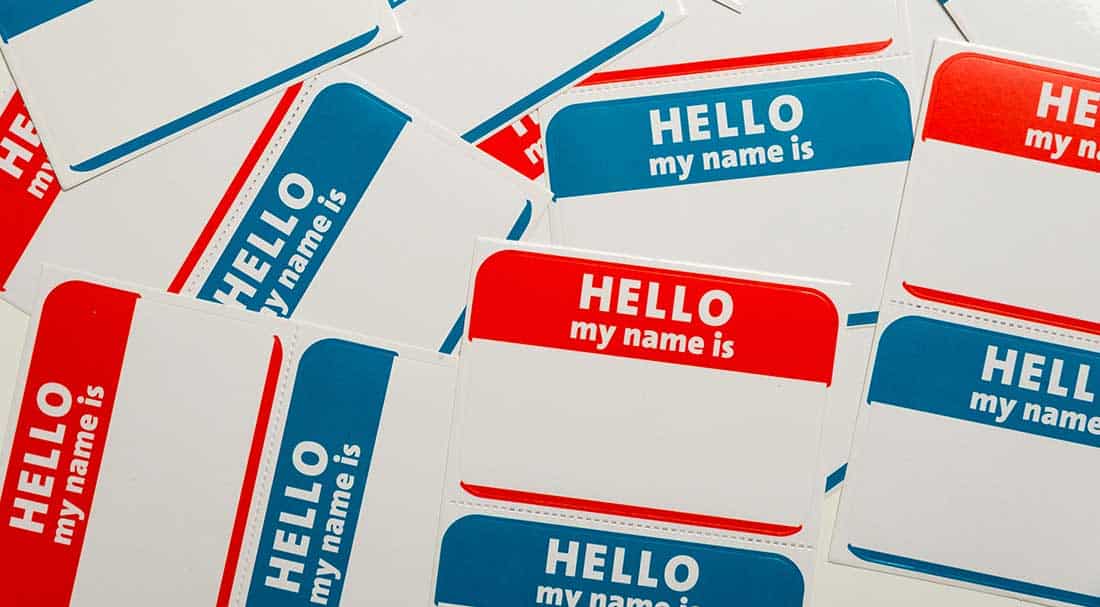
12 Dec Company, Product, and Service Naming – Strategic, not Subjective
Naming a company, product, or service is not like naming your newborn. Naming a baby tends to be subjective and emotional (“George? I hate the name George! When I was a kid, I was bullied by a guy name George!”)
Naming needs to be non-emotional, subjective, and strategic. Easier said than done.
To help you achieve that goal, we’ve created a strategic naming process we call the “5 S Test.” When naming a company, product, or service, subject every name option to the following five tests:
1. Sell
The name must be on strategy. It must reflect the brand positioning and strategic direction of the organization.
2. Say
Is the name easy to pronounce? If it’s unwieldy, it’s doomed. Sure, there are exceptions, but few. How many millions of dollars has Wausau spent on advertising in an attempt to help people pronounce and remember their name? (And it’s still not the household name of Met Life or John Hancock if you’re talking about Wausau Insurance, not Wausau Paper…which raises a whole host of other issues.) “Hyundai” wouldn’t immediately pass the Say Test. And there are others that have succeeded despite their name. But most successful brands have a name that people can pronounce right from the start.
3. Spell
It’s on strategy and you can say it, but do you have to spell it every time? Having to spell your name over and over can quickly become not only annoying, but also downright detrimental to your brand—spelling shouldn’t be the start of precious time with a prospect or customer, or hinder your prospect from making contact with you. Think Wausau again which, for years, has run campaigns telling people how to spell their name. Some may make the argument that this just becomes a device to push the brand to the forefront and repeat the name—particularly a brand of insurance, a service that is essentially invisible. But again, couldn’t the money be spent on a more productive kind of differentiation? This is the approach that most successful, spell-able brands take.
This is not to completely rule out options with spelling that deviates from the norm. A name can have unusual spelling but still be easy to understand and remember. For example, the spelling of “Citi” Bank is well known to their customers, of course, but also to consumers in general.
4. Smell
Okay, so the name is strategic, pronounceable, and doesn’t have to be spelled every time. Is it good? Or does it stink? You can say it, but can you say it with a straight face and without embarrassment? Project forward to the day you announce the choice to the Board. How will they react? Pretend you’re the company receptionist—answer the phone “cold” with the proposed new name. How does it “feel”? Is it pleasing and positive—not forced, not weird, not boring? What will your stakeholders and customers like and dislike about it? Every name has strengths and weaknesses. We try to be thorough and blunt in assessing both for every option…because we know your audiences will.
5. Search
Copyrighting is the final test. A name can meet all of the above criteria, but if your legal counsel can’t secure clearance, you can’t proceed safely. It’s painful when a favorite option falls out of the running for this reason, but better to discover it now than too late.
But once again, there are potentially numerous judgment calls to make. A name may be identical, or similar, to another company’s name, but if you and your legal counsel deem it non-conflicting, you may choose to proceed. In other cases, a company may deem a potential conflict surmountable through negotiations with the party currently holding the trademark.
However, we generally recommend you take the conservative approach—to avoid, as much as possible, names without a “may already be taken” or “get ready for negotiations” asterisk attached. As always, there are exceptions; however, in most cases, it seems shortsighted to conclude that there is only one acceptable option for a name, especially one that’s already taken.
That’s why it’s critical to conduct a preliminary name search with the following primary sources:
• US Patent and Trademark Office
• GoDaddy
This isn’t a conclusive, binding, international search, but it helps weed out a lot of options that are good, or even great, but may pose problems when you seek clearance and ownership.
If the name is trademarked, eliminate it. If the URL is taken, eliminate it (unless the URL is for sale). When doing a Google search, if you discover other products or services that have the same or a similar name, eliminate those that are in your field. And immediately eliminate from consideration any that have matches or near-matches suggesting irreverence, immorality, or unprofessional behavior.
Developing naming options is easy. Developing names that pass the 5 S Test is not. That’s why we recommend your counsel check the availability of three name options vs one—so you don’t put all your eggs in one basket.
